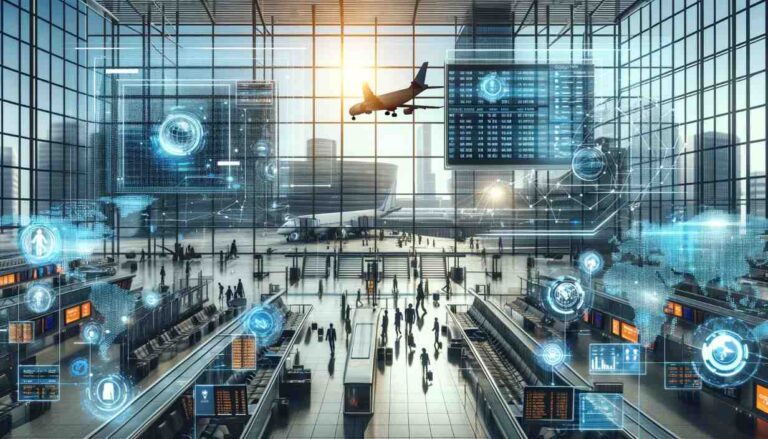In the dynamic aviation sphere, the emergence of Flight Status AI represents a groundbreaking improvement, signalling a brand new generation in airline facts management. This superior technology transcends traditional techniques, imparting unprecedented performance and accuracy in monitoring and disseminating flight facts. As the aviation industry evolves, the position of Flight Status AI will become increasingly pivotal, not simply as a device but as an innovative pressure reshaping the entire panorama of air travel.
Revolutionizing Passenger Experience with Flight Status AI
At its core, this technology is designed to enhance the passenger experience. In an era where time is of the essence, passengers demand timely updates and accurate information. Stepping in as a dependable source, it offers immediate information on flight schedules, delays, cancellations, and gate changes. This technology ensures that passengers are always informed, substantially reducing the stress and uncertainty associated with air travel.
Optimizing Airline Operations Through Flight Status AI
Beyond passenger communication, this technology is crucial in optimizing airline operations. By analyzing large quantities of data, including weather patterns, air traffic, and aircraft status, this AI system aids airlines in making informed decisions. Such informed decision-making leads to improved punctuality, better resource allocation, and heightened operational efficiency—cornerstones of successful airline management.
Flight Status AI: A Tool for Enhanced Safety and Security
Safety and protection are paramount in aviation. The use of advanced technology contributes appreciably to these factors by offering real-time flight tracking. This continuous oversight ensures that potential issues are identified and addressed immediately, enhancing standard flight safety. Furthermore, the predictive capabilities of this technology permit anticipatory measures, lowering the chance of incidents and raising the age of air travel security.
Integrating Flight Status AI with Customer Service
Customer service is another domain where this AI system proves integral. It reduces the workload on customer support teams by automating responses to frequent queries regarding flight statuses. This integration allows airlines to offer passengers prompt, accurate information, thereby improving customer satisfaction.
Flight Status AI and Environmental Sustainability
In the contemporary environmentally conscious world, this technology contributes to sustainability in aviation. It minimizes the environmental impact of air travel by optimizing flight paths and reducing unnecessary fuel consumption. Such efficiency benefits airlines economically and aligns with global efforts to reduce carbon emissions.
The Competitive Edge Offered by Flight Status AI
Airways benefit significantly from a very competitive industry using this technology. It enhances operational efficiency and bolsters an airline’s reputation for reliability and customer support. As a result, airlines leveraging this technology regularly witness improved customer loyalty and an elevated market share.
Overcoming Challenges in Implementing Flight Status AI
“While the advantages of this technology are manifold, its implementation isn’t without challenges. Integrating AI into existing structures calls for widespread investment and technical knowledge. Moreover, the management and evaluation of large data sets present challenges. However, the long-term benefits outweigh these initial hurdles, making the adoption of this technology a sensible selection for forward-thinking airlines.
Flight Status AI and the Future of Air Travel
Looking toward the future, this technology is set to become a cornerstone in the evolution of air travel. With advancements in AI and machine learning, its capabilities will expand, providing even more sophisticated solutions to the complex challenges the aviation industry faces.
Ensuring Data Privacy and Security in Flight Status AI
Information privacy and security are of utmost significance in this generation. As airlines gather and analyze giant amounts of passenger records, ensuring their safety is vital. Rigorous security protocols and adherence to data safety rules are essential to maintaining passenger trust and upholding the integrity of these systems.
Conclusion
This marks a brand new chapter in the annals of airline information control. Its effect is far-reaching, revolutionizing airways’ performance and improving passengers’ average air tour experience. As we embody this new generation, its capability to transform the aviation industry is undeniable, making it a fundamental tool for any airline looking to thrive in the 21st century.
It is a beacon of innovation and efficiency in airline records management. As the generation keeps evolving and integrating more profoundly into the fabric of the aviation industry, its role in shaping the future of air journeys becomes increasingly widespread. Adopting it isn’t just a step towards development but a leap into a new era of informed, efficient, and passenger-centric air travel.

